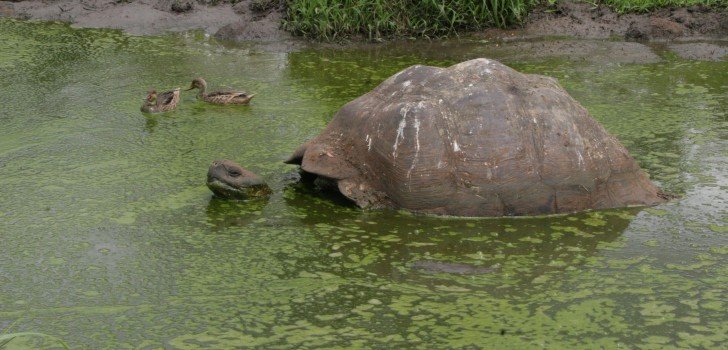An international team of researchers working on the Galapagos islands have just discovered a new species of tortoise, which up until now had been thought to be part of a more common species found there.
Writing in the scientific journal PLOS ONE, the researchers from the U.S., Ecuador and Canada, say this isn’t the first time scientists have found a new species that put to rest the theory that all Galapagos tortoise’s belonged under the single species Chelonoidis nigra dpecies umbrella. With the discovery of the new species on Santa Cruz Island, the species count is now up to sixteen.
The new species of 250 turtles was found twelve miles east of another group of 3,000 tortoises, which although more diminutive and possessing slightly different shells, had been thought to still belong to the same species.
However, the researchers decided to carry out genetic analysis on 100 living tortoises from both populations, and found the two groups are distinct species. Furthermore they found that the two are not even one another’s closest relatives. Using genetic detective work, the researchers found the two species had not evolved by breaking into two species due to competition, but that the new tortoise’s ancestors had arrived on Santa Cruz via a different island, San Cristobal.
After landing on Santa Cruz, the new turtle stuck to the drier environment found in the east, keeping its population cut off from other species which prefer wetter locales. Over the years, they had evolved into a unique species even different from their families left behind on San Cristobal.
The new species has been named C. donfaustoi, in honor of Fausto Llerena Sánchez, Ecuador’s oldest park ranger. Sánchez retired last year after 43 years. The team writes “several tortoise lineages in Galapagos remain extant in large part due to Don Fausto’s dedication, ingenuity and patience.”
Stay Connected